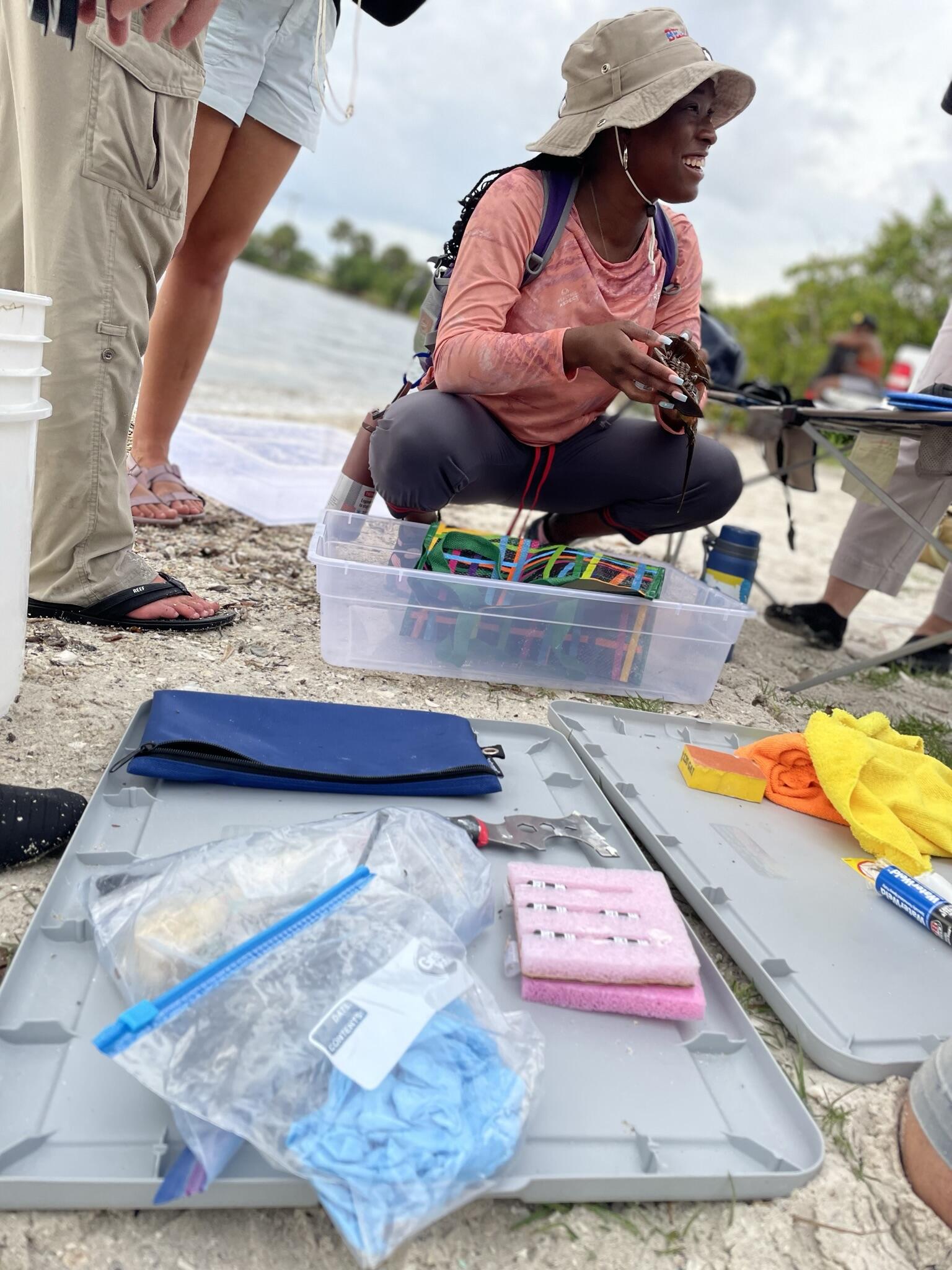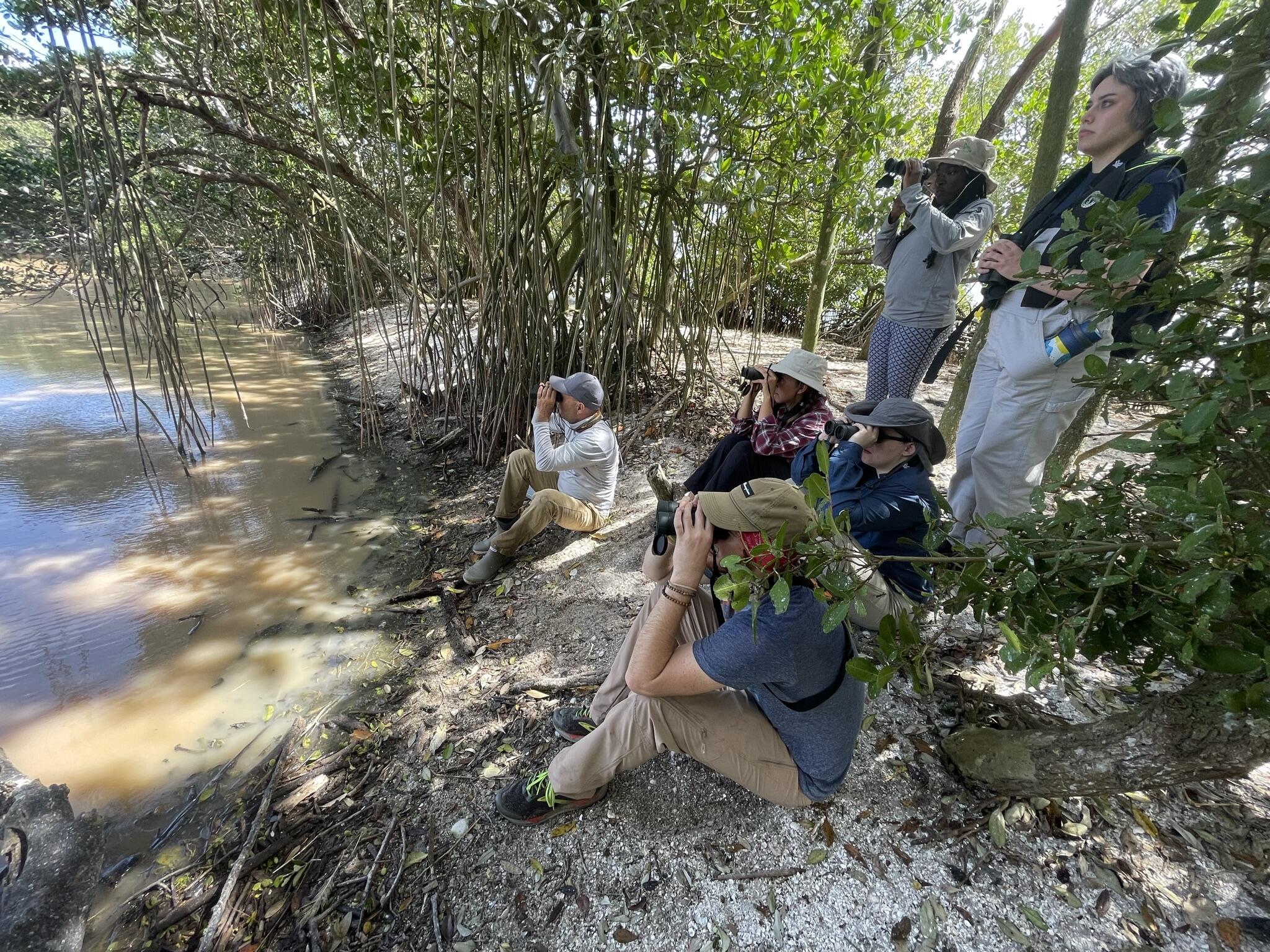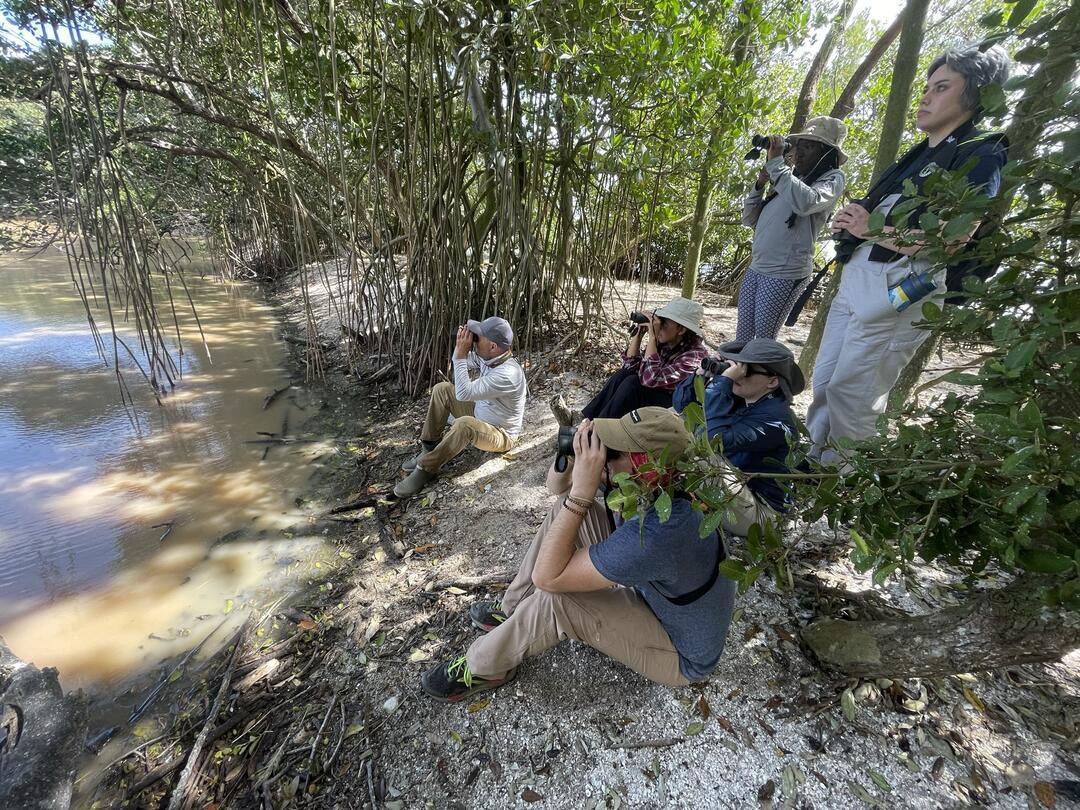Members of Audubon Florida’s Conservation Leadership Initiative arrived in Titusville, FL, part of Florida's ever-humid Space Coast, for a spring break opportunity of a different kind: four days of environmental restoration and protection activities and lessons in birding and aquatic management.
Soon after arrival, we quickly transitioned into birding mode, armed with binoculars and exploring the area we would call home for the next few days. Ospreys on their dinner runs, Blue Jays, and plenty of coastal ducks marked our first spotted species, before we bonded over a pizza dinner and prepared ourselves for the adventures ahead.
We met the Florida Department of Environmental Protection (FDEP) Indian River Lagoon Aquatic Preserves team the next day. The team features Matthew Anderson, whose passions are aquatic systems and the creatures that live there, Kurt Fusco and Emily Surmont, the horseshoe crab specialists, and Irene Arpayoglou, the Aquatic Preserve Manager. We boarded their boat and sailed out to one of the FDEP’s spoil islands, created from dredged material in the causeway. They are relatively small and densely vegetated, unfit for commercial development but perfectly suited for animal sanctuaries.
This particular island has been selected as future habitat for the state-Threatened Least Tern. The Least Tern is a migratory shorebird that nests on Florida’s shores in the spring and summer before departing to the tropics for the winter. Although they try to carefully camouflage their scoop nests right on the sand, the nest and chicks are frequently disturbed by coastal predators and human activity. For that day, a large portion of our work consisted of removing the ever-invasive Brazilian pepper tree, which compromises the Least Tern’s nesting habitat. After our workday, our crew boarded the boat back to the dormitories and eased into a late afternoon of birding and relaxation.
Day two of spring break featured the creation of another habitat - but this one for humans. The Indian River Lagoon Team recognizes that to prevent human encroachment on spoil islands designated for endangered species, we must in turn create spoil islands for human recreation. So, we busily built picnic tables and fire pits while doing a bit of litter cleanup on a nearby spoil island for visitors and locals alike.
While I felt accomplished after our day’s efforts, the real highlight came with birding on a nearby protected island – a haven for Roseate Spoonbills and Wood Storks, plus stingrays and dolphins.
The island itself is small, but the birds occupy nearly every tree on the island (full of feathers and poop). One of my colleagues, Dagny Bodach, had taught me the day before how to take videos through the binoculars, so I was able to get an up-close and personal video of a very pink Roseate Spoonbill. Others in our group - including our personal bird encyclopedia Jacob Ewert, president of the University of Florida Audubon Chapter - were in heaven, as this was probably the closest any of us would ever safely get to these beautiful creatures.
Our concluding day in Titusville was densely packed with birds and horseshoe crabs. During the early morning, we cultivated and restored a local pollinator garden. The garden work gave more excellent opportunities for birding, and we even got to see an Osprey on a live dinner run with freshly caught coastal fish.

We transitioned from pollinator garden to horseshoe crab telemetry and Kurt gave a presentation as to why this was important for the FDEP and the Indian River Aquatic Preserve team. The tracker that is used on the horseshoe crabs emits sounds that correlate with other receivers on the lagoon floor. These receivers then transfer the data to the FDEP Titusville research station, and in turn, the team translates this data to assess the health and stability of the lagoon and monitor migration patterns to see where the horseshoe crabs go after their time in Titusville. Our team found a beach full of horseshoe crabs in prime mating season, and we tagged five individuals before being stormed out by a typical Florida afternoon downpour. During tagging, we also took weight and age assessments and learned we had a relatively young population of horseshoe crabs with a few larger seasoned females.
This concluded our time in Titusville. We truly enjoyed our experience and are very grateful to the Florida Department of Environmental Protection IRLAP team for generously educating and empowering the next generation of environmentalists. On a personal note, as a young black environmentalist, it is often hard to find avenues to explore this level of research and to be provided a vast breadth of environmental knowledge from such distinguished individuals. While I am grateful for FDEP’s Indian River Lagoon team, I'm even more appreciative of Audubon Florida’s Conservation Leadership Initiative for providing an individual such as myself with such an amazing opportunity. Though there were many highlights throughout this trip, any day spent birding and with horseshoe crabs is a day truly worth remembering.
Audubon Florida's Conservation Leadership Initiative (CLI) is an experiential learning program providing opportunities for undergraduate college students to immerse themselves in Audubon, strengthen leadership skills, and gain an understanding of career options in the conservation field. Click here to learn more.








